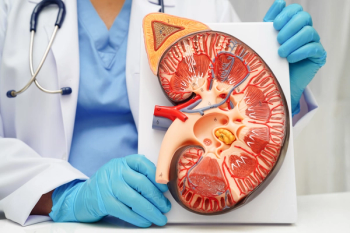
Study: Many Common and Deadly Cancers Do Not Receive Adequate Funding
Stigma around behaviors such as smoking or drinking found to effect funding for associated cancers.
Many of the most common or deadly cancers are the ones that get the least amount of funding, according to a new study by Northwestern University.
Investigators found that colon, endometrial, liver and bile duct, cervical, ovarian, pancreatic, and lung cancers receive the least amount of funding compared with the number of deaths associated with these diseases. In contrast, well-funded cancer types include leukemia, lymphoma, and pediatric cancers. Underfunding cancer research could negatively affect research, drug development, and the number of drugs approved by the FDA for poorly funded cancers, according to the press release.
The study compared each cancer’s revenue with the number of new cases, number of deaths, and the total years of life lost. The study was conducted between October 2017 and February 2018 and used IRS tax records. Investigators identified
all of
the nonprofits that supported any type of cancer and made at least $5 million in revenue in 2015. Ultimately, 119 charitable organizations and $5.98 billion in revenue were identified.
The vast majority of
the revenue ($4.59 billion) went to general cancer charities with no specific disease focus, according to the study.
Investigators found that cancers associated with a stigmatized behavior, such as smoking or drinking, received less funding and support. Additionally, stigma around certain body parts or discussions may also be hindering support for certain cancer types.
“Shame and
discomfort
with talking about our bowls and ‘private parts’ may be reducing funding for disease like colon or endometrial cancer,” Suneel Kamath, MD, chief fellow at Northwestern University Feinberg School of Medicine’s hematology and oncology department at the time of the study, said in a press release.
Kamath added that the goal of the study was to not redirect funding, but to expand it.
“These are all deadly and life-altering disease that deserve our attention and support,” Kamath said.
“Well- funded patient advocacy organizations should be applauded for their successes,” study co-author Dr. Sheetal Kircher, assistant professor of hematology and oncology at Feinberg and a Northwestern Medicine oncologist, said in the press release. “We hope to bring awareness to the organizations with less relative funding so we can collaborate to improve funding and outcomes for all patients with cancer.”
Reference
Many of the deadliest cancers receive the least amount of research funding. Science Daily. Published July 18, 2019.
Accessed on July 22, 2019
Newsletter
Stay informed on drug updates, treatment guidelines, and pharmacy practice trends—subscribe to Pharmacy Times for weekly clinical insights.
















































































































































































































